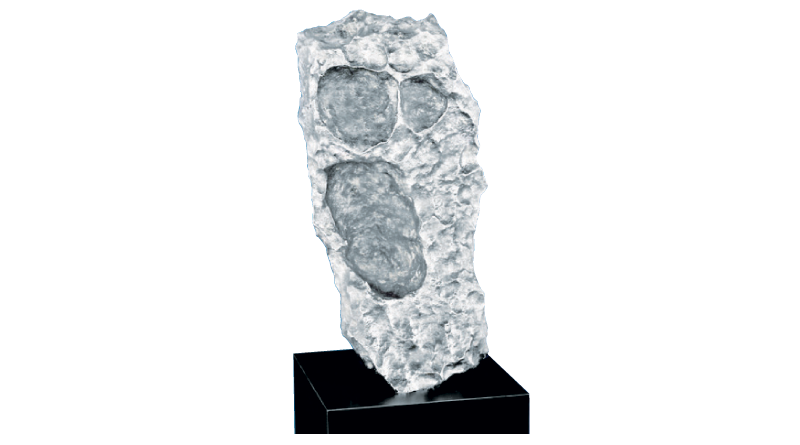

Shell out $100,000, if you may, and the 100g rock is yours. Not just some rock; but a meteorite, and in this case, a Martian rock. Sometimes, you may get one at a “throwaway” price, as was the case with a Barwell piece weighing 900g that was auctioned off for over $10,500 in the United Kingdom in 2009.

It need not necessarily be a boring dark stone. Meteorites can be truly artistic. The Gibeon meteorite, looking like the expressionist work ‘The Scream’ by painter Edvard Munch, is priced nearly $310,000. Let me mention yet another one, the Fukang meteorite — a pallasite made of nickel-iron laced with olivine (green) crystals — that is worth $1,878,037 only! This is one of the most expensive meteorites. The interstellar price is because as little as 1 per cent of all the meteorites that we humans get are pallasites. And, it is estimated to be some 4.5 billion years old. Our own earth is younger, in comparison.
And, there are collectors who own a thousand of them. Like Graham Ensor from the UK, who is known to have the largest meteorite collection in the country.
So meteorites can even be a better investment option than gold. But what makes meteorites so pricey?
The main factor is that they hold high scientific value. They can enlighten us with rare insights into how the early Solar System came into being. Most meteorites are of the same age as, or older than, the earth.
Earth’s rocks can’t last that long, due to the effects of erosion and other weathering forces such as melting and morphism.
And, of course, there is the mystical or exotic aspect associated with them. They simply don’t belong to the earth. Also, they are extremely rare. You must be really extraordinarily lucky to confront a meteorite as you stroll in the park.
And beauty and charm matter a lot. Meteorites that are really chic command better price. Pedigree too counts. Collectors value rocks from the Moon and Mars much higher than others, generally. They can be stones, iron, a mix of these two, or some other type.
The Sultanate has one of the largest collections of meteorites of high value. In fact, it has some 6,558 discovered pieces weighing 4,775kg in all, and ranks third globally in meteor wealth. And a significant number of them are either lunar or Martian. According to a 2011 study, the Sultanate holds a 14 per cent share of all the world’s meteorite finds, excluding Antarctica. Every year meteors numbering between 11 and 36 fall in the Sultanate.
And as such, there is great concern of smuggling gangs targeting Oman’s rich meteor wealth. The safeguarding of the Sultanate’s meteorite collection is entrusted with the Ministry of Heritage and Culture, while the Public Authority for Mining (PAM) works on the preservation of these precious rocks and look into means to use them in scientific research and to boost the economy. The country’s Mineral law makes it illegal for anyone to possess them without valid licence.
Oman has been collaborating with the Switzerland’s Natural History Museum in Bern for the study and classification of the Sultanate’s meteorites, since the signing of an MoU in 2009. Recently, the museum returned the first batch of Omani meteorites back to the Sultanate, and they include Martian and Lunar pieces aged billions of years.
Extra-terrestrial objects never fail to enthuse and bemuse us. What about buying a villa near a potential “strewn field”, where the possibility of a meteor shower is higher?
Oman Observer is now on the WhatsApp channel. Click here



